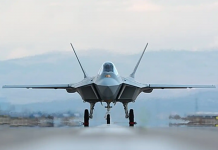
Stockholm-based startup TERASi , a developer of ultra-compact solutions for advanced secure gigabit-speed communications—including 6G and beyond – has introduced the RU1, the world’s smallest high-security radio built for rapid deployment and resilient communications in demanding environments.
Transforming Tactical Communications
Teams operating in hostile, remote, or infrastructure-poor areas – such as armed forces, emergency responders, or industries like mining and forestry – often face major hurdles with traditional communication systems. Conventional solutions are slow to set up, expensive, and susceptible to interception or jamming due to reliance on standard microwave frequencies. Limited bandwidth further constrains critical tasks such as streaming high-resolution video for surveillance or transmitting large volumes of sensor data for AI-driven platforms, autonomous machinery, or defense applications. These issues are magnified by dependence on third-party providers, as demonstrated by Ukraine’s heavy reliance on Starlink during the ongoing conflict.
TERASi, a spinout from KTH Royal Institute of Technology, has addressed these challenges with ultra-compact millimeter-wave radios operating above 60 GHz. Using highly directional, laser-like beams, the RU1 creates secure links that cannot be jammed or intercepted. Its breakthrough Aircore technology delivers radically improved efficiency, making the device up to 40 times smaller and 100 times lighter than competing solutions. Designed for rapid setup on drones or tripods, the RU1 establishes sovereign, gigabit-speed backbones up to 50 times faster than satellite connections, offering unmatched speed, resilience, and adaptability.
The Dangers of Dependence on Commercial Networks
The vulnerability of relying on commercial providers was highlighted in September 2022 when Elon Musk restricted Starlink coverage during a Ukrainian counteroffensive, disrupting drone operations. Beyond this, commercial satellite services such as Starlink or Amazon Kuiper typically max out around 200 Mbps—far below the throughput required for mission-critical operations. TERASi’s solution provides an independent, sovereign network immune to external control or deactivation, ensuring uninterrupted, high-speed communication for defense, disaster relief, and industrial needs.
Lightweight, Flexible, and Cost-Effective
Manufactured entirely in Stockholm, the RU1 is optimized for low power usage and battery operation, eliminating the need for wired power or trenching. The system can even be drone-mounted, enabling mobile and flexible coverage across difficult terrain or disaster-stricken areas, while minimizing detection risks. Compared with costly fixed infrastructure such as towers and base stations, deployment is dramatically simpler and cheaper, reducing total cost of ownership for defense and heavy industries.
For surveillance and security use, TERASi radios can carry large volumes of video and sensor data without requiring expensive edge devices. This enables central monitoring powered by advanced AI models, improving accuracy, reducing costs, and supporting agile redeployment of equipment as needed.
CEO’s Vision
James Campion, CEO and Co-founder of TERASi, explained:
“The RU1 is like the GoPro of backhaul radios. We’ve taken a system that was once heavy, complex, and tied to fixed infrastructure and turned it into something lightweight and portable. In today’s world, where geopolitical shifts can suddenly cut access to commercial networks, sovereign and independent connectivity has become essential. Our goal is to empower military units, emergency services, and critical industries with the ability to instantly establish secure, high-capacity networks anywhere—without reliance on satellites or permanent installations. The RU1 shows that small size and mobility can coexist with top-tier performance and security.”




